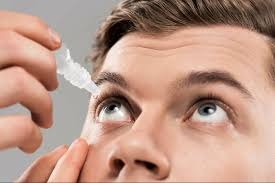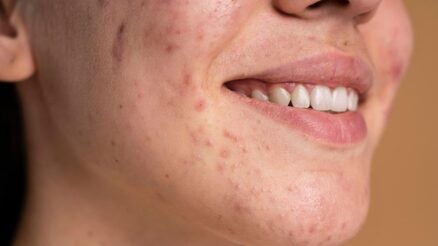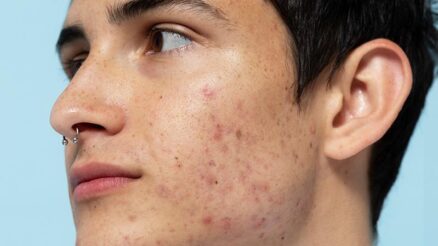Photorefractive Keratectomy, commonly known as PRK, stands as one of the pioneering laser vision correction procedures, offering a path to clearer sight for individuals reliant on glasses or contact lenses. While highly effective, a key consideration for prospective patients is the recovery period, which differs significantly from its more commonly known counterpart, LASIK. Understanding the timeline, sensations, and necessary care during PRK recovery is crucial for managing expectations and ensuring the best possible outcome.
PRK vs. LASIK: The Fundamental Difference in Healing
The primary distinction influencing recovery lies in the surgical technique. In LASIK, a thin flap is created on the cornea (the eye’s clear front surface), the underlying tissue is reshaped with an excimer laser, and the flap is repositioned. Healing is relatively quick as the flap acts like a natural bandage.
PRK, however, involves gently removing the outermost layer of the cornea, the epithelium, before the laser reshapes the underlying corneal tissue. This epithelial layer then needs to regenerate naturally over the surface of the eye. Because there is no flap, the initial healing phase involves this regrowth, leading to a longer and often more uncomfortable initial recovery compared to LASIK. Despite the longer initial healing, PRK is often recommended for patients with thinner corneas, certain occupations (like military or contact sports), or those prone to dry eye, as it avoids potential flap-related complications.
The Recovery Timeline: A Week-by-Week Look
PRK recovery is a gradual process, marked by distinct phases:
- The Immediate Post-Operative Period (Day 0-1): Immediately after the short procedure, vision will likely be quite blurry, akin to looking through fog or water. The surgeon will place a clear, non-corrective “bandage” contact lens on the eye. This lens protects the treated surface, reduces pain, and aids in epithelial regrowth. Mild discomfort, scratchiness, or a foreign body sensation is common. Light sensitivity (photophobia) often begins shortly after surgery. Patients are instructed to rest their eyes, avoid bright lights, and start a regimen of prescribed eye drops (typically antibiotics, anti-inflammatories/steroids, and lubricating drops). Driving is not permitted.
- The Epithelial Healing Phase (Days 2-5): This period is often considered the most challenging part of PRK recovery. Discomfort typically peaks during days 2 and 3 as the epithelium regenerates. This can range from mild irritation to significant pain, often described as a burning or gritty sensation. Light sensitivity usually remains high, and vision continues to be blurry and may fluctuate. Consistent use of prescribed eye drops is vital to prevent infection, control inflammation, and manage pain. Oral pain medication may be prescribed. Keeping the eyes lubricated and resting frequently is essential. Towards the end of this phase (around day 4 or 5), the surgeon will remove the bandage contact lens once sufficient epithelial healing has occurred.
- The First Few Weeks (Weeks 1-4): Once the bandage lens is removed, comfort levels generally improve significantly. However, vision is still far from perfect. While functional vision often returns within the first week or two, allowing many to resume work (depending on visual demands) and driving (once legal standards are met and approved by the surgeon), clarity will continue to fluctuate. Haze, glare, or halos around lights, especially at night, are common during this time. Dry eye symptoms can also persist or even increase as the corneal nerves recover. Strict adherence to the steroid eye drop schedule (which is often tapered slowly over several weeks) and frequent use of artificial tears are critical. Protecting the eyes from UV light with sunglasses is mandatory outdoors, as UV exposure can increase the risk of corneal haze.
- Months 1-6: Stabilization and Refinement: This phase is characterized by gradual visual improvement and stabilization. The majority of healing occurs within the first three months, but subtle changes and improvements can continue for six months or even longer. Fluctuations in vision become less frequent, and night vision issues like glare and halos typically diminish significantly. Dry eye symptoms also tend to gradually resolve, although some individuals may require ongoing use of artificial tears. Regular follow-up appointments with the eye surgeon are crucial during this period to monitor healing, check eye pressure (due to steroid use), and ensure the visual outcome is progressing as expected.
Factors Influencing Recovery Speed
While the above timeline provides a general guide, individual recovery experiences vary. Factors influencing healing include:
- Individual Healing Response: Everyone heals differently.
- Pre-operative Prescription: Higher prescriptions may sometimes correlate with slightly longer stabilization periods.
- Adherence to Post-Op Instructions: Diligently using drops, avoiding eye rubbing, and protecting the eyes are paramount.
- Pre-existing Conditions: Significant dry eye before surgery can sometimes prolong recovery discomfort.
- Age: While not a major factor, subtle differences in healing speed can exist.
Managing Recovery: Key Takeaways
Patience is the cornerstone of PRK recovery. While the initial days can be uncomfortable and the visual recovery slower than LASIK, the long-term visual outcomes are excellent and comparable. Key elements for a smooth recovery include:
- Strict Adherence: Follow the surgeon’s eye drop schedule meticulously.
- Protection: Wear sunglasses outdoors consistently for at least the first 6-12 months. Avoid rubbing your eyes.
- Lubrication: Use preservative-free artificial tears frequently, especially in the initial months.
- Rest: Allow your eyes adequate rest, particularly in the first week.
- Follow-ups: Attend all scheduled post-operative appointments.
- Patience: Understand that clear, stable vision takes time to achieve.
PRK offers a reliable way to achieve freedom from corrective lenses. By understanding the recovery process, managing expectations, and closely following medical advice, patients can navigate the healing period successfully and look forward to the rewarding outcome of clear vision.
READ MORE : Enhance Your Skills with a Critical Care Ultrasound Course





